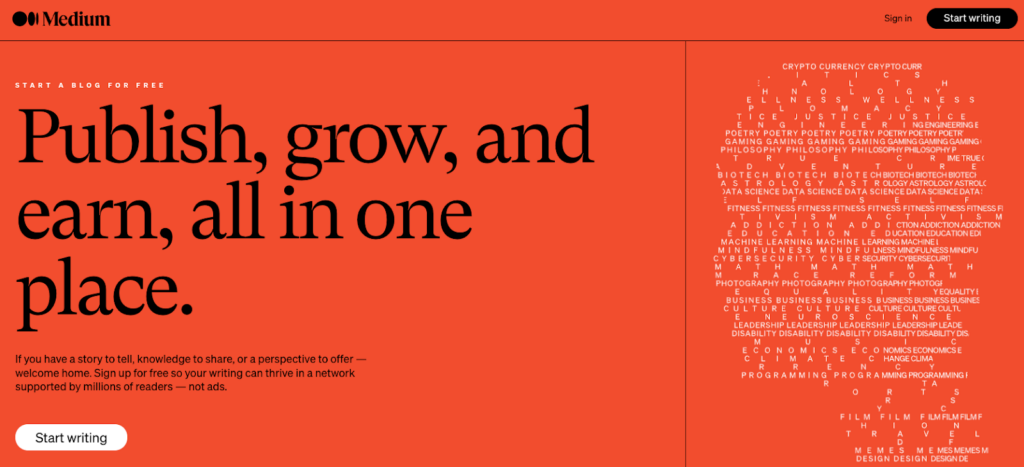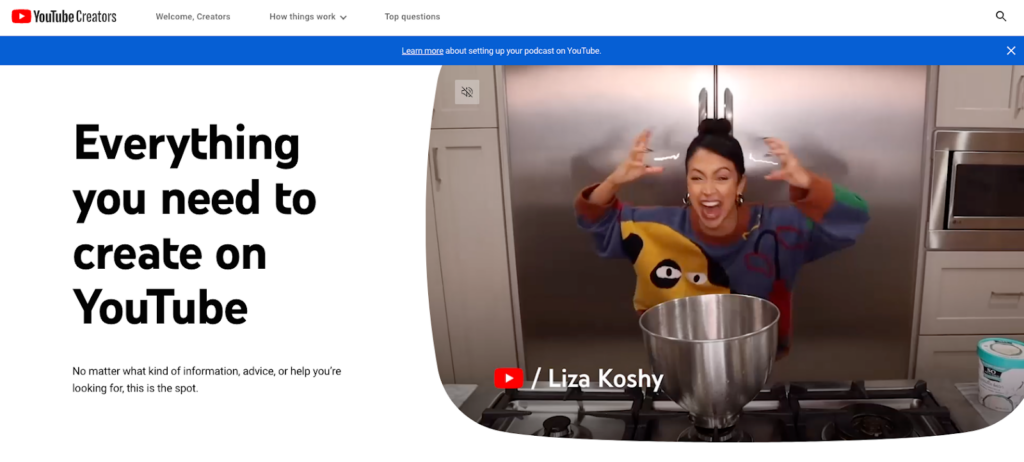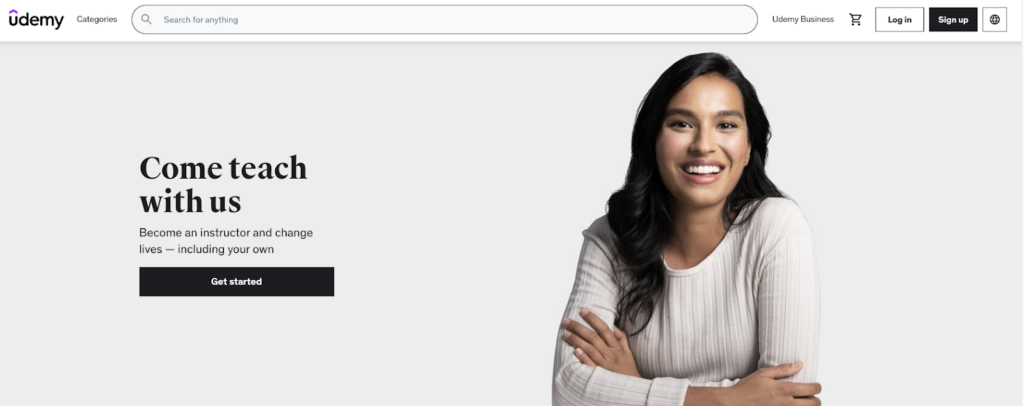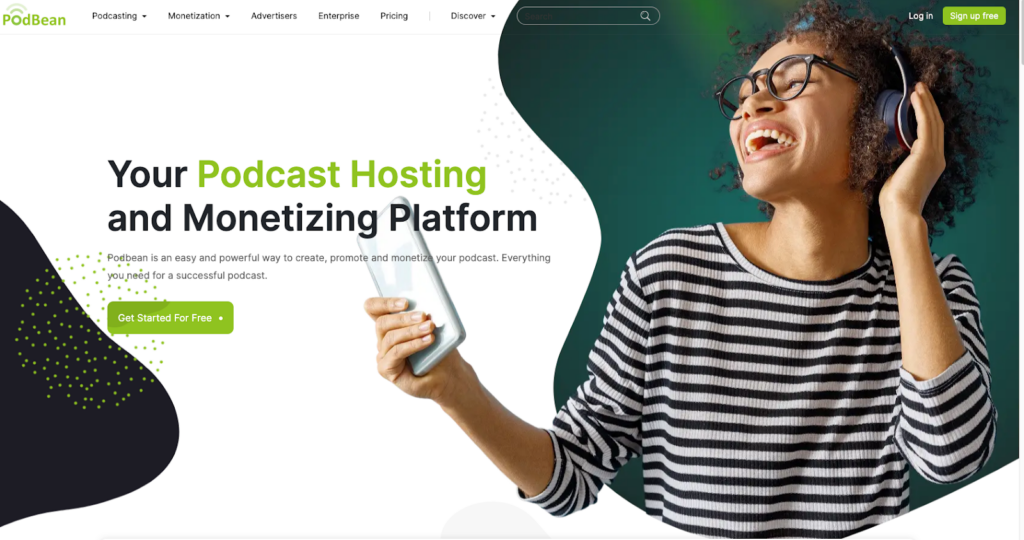In our digitally-forward world, the power of content is undeniable. We all have the potential to transform our ideas into a business or a stream of income, thanks to the advent of content monetization platforms. But before we dive headfirst into our main topic, let’s take a moment to define what content monetization is and why it’s so important.
Content monetization is the process of earning revenue from your digital content—anything from blog posts, videos, podcasts, and online courses, to webinars or even your social media posts. It’s the digital equivalent of turning your ideas into gold, and it’s an exciting concept for creators, educators, and business owners alike.
In a world where anyone can publish content online, monetization is the key differentiator that can turn a passion project into a profitable venture. It allows creators to earn a living from their craft, provides businesses with an avenue for additional revenue, and even offers educators a platform to reach more students. Plus, the process becomes easier and more efficient with the best monetization platforms at our disposal.
So, whether you’re a seasoned content creator or a newbie, understanding the intricacies of content monetization platforms is a crucial step in your journey. Join us as we explore the best options available, providing insights to help you find the perfect fit for your unique content. Let’s turn that digital content into something even more impressive—a source of income!
Skip ahead:
- Top content monetization platforms
- Comparison of content monetization platforms
- How to choose the right content monetization platform
- Monetizing your content creations
- FAQs
Top content monetization platforms
Now that we’ve set the stage, it’s time to shine the spotlight on the stars of the show —the top content monetization platforms. These platforms offer unique features and benefits to help you maximize the potential income from your digital content.
WordPress is one of the most popular content management systems in the world, with the flexibility to accommodate a range of content from blog posts to online courses. It’s perfect for creators who wish to maintain a high level of control over their site and its monetization.
Key Features
- Customization: With thousands of themes and plugins, you can design your site and add functionalities to fit your specific needs.
- WooCommerce: An eCommerce plugin that allows you to sell products, services, and digital content directly from your site.
- Advertisements: WordPress supports various ad networks for passive income.
Pricing
WordPress itself is free, but costs may arise from web hosting, premium themes or plugins, and services like managed WordPress hosting. It’s a model that allows for a lot of scalability based on your budget.
Pros and Cons
Pros: High customization, broad range of plugins, scalability.
Cons: May require technical know-how, potential costs for premium features.
Medium is a platform built for writers. It’s a great place to monetize written content, whether you’re an independent blogger, a professional journalist, or an author.
Key Features
- Medium Partner Program: Writers earn money based on how Medium members engage with their articles.
- Curation: Medium curates and promotes articles, increasing your content’s reach.
- Built-in audience: Medium has an established community of readers across numerous topics.
Pricing
Writing on Medium is free, but earning through the Partner Program requires Medium’s membership, which costs $5/month or $50/year.
Pros and Cons
Pros: Built-in audience, curated promotion, simple user interface.
Cons: Earning potential depends on member engagement, limited customization.
Substack is a platform that allows writers to monetize their newsletters. It’s an excellent choice for writers who want to monetize a niche or specialized content.
Key Features
- Subscriptions: Writers can set a subscription price for their newsletters.
- Free and paid content: Offers flexibility to have both free and subscriber-only content.
- Community features: Subscribers can comment and engage with your newsletters.
Pricing
Substack takes a 10% fee from your subscription earnings. The platform itself is free to use.
Pros and Cons
Pros: Great for niche content, fosters community engagement, enables direct monetization.
Cons: Earnings are commission-based, limited to newsletters.
TikTok is a global phenomenon and a platform where creativity reigns. Best suited for short, engaging video content, it’s a wonderful platform for creators who excel in creating visual and entertaining content.
Key Features
- TikTok Creator Fund: Creators earn a share of the fund based on their video views.
- Live Gifts: Fans can buy and send virtual gifts during live videos.
- Advertising: Brands often collaborate with creators for advertising.
Pricing
Using TikTok is free, and creators can start earning via the TikTok Creator Fund once they meet eligibility criteria.
Pros and Cons
Pros: Large user base, multiple avenues for earning, supports creativity.
Cons: Earnings depend on views, niche may affect earning potential.
YouTube, the king of video content platforms, is ideal for creators who produce long-form video content. From tutorials to vlogs, YouTube can monetize virtually any video content.
Key Features
- Ad Revenue: Earn from display, overlay, and video ads.
- Channel Memberships: Fans pay a recurring fee for special perks.
- YouTube Partner Program: Enables monetization once you meet eligibility criteria.
Pricing
YouTube is free to use. Earnings come from ad revenue and channel memberships, but YouTube does take a 45% share of ad revenue, while channel membership fees are split 70/30 in favor of the creator.
Pros and Cons
Pros: Wide global reach, diverse monetization options, large audience base.
Cons: YouTube takes a significant cut of earnings, high competition, stringent eligibility criteria for monetization.
Related: The Best YouTube Monetization Alternatives
Udemy is a popular platform for creators and educators who wish to monetize their knowledge through online courses. It caters to a global audience seeking to learn new skills or improve existing ones.
Key Features
- Course sales: Earn from selling your courses to students.
- Instructor promotions: Instructors receive a higher revenue share from sales made through their promotional activities.
- Global marketplace: Udemy has students from all over the world.
Pricing
Creating and hosting courses on Udemy is free. Revenue share depends on who brings the student to the course—if Udemy does, it takes 50% of the revenue, whereas instructor-led promotions lead to 97% of revenue going to the instructor.
Pros and Cons
Pros: Access to a global student base, high revenue share for instructor promotions, free to host courses.
Cons: High competition, Udemy takes a significant cut from sales it facilitates.
Related:
Thinkific is a robust platform for course creators who want to have total control over their online courses’ design, pricing, and student data. It’s great for educators, coaches, and businesses that want to monetize through e-learning.
Key Features
- Course building: Easy drag-and-drop course builder to create professional-looking courses.
- Online learning communities: Engage and retain your audience with full con custom-branded community
- Full control: You control your content, pricing, and student data.
- Marketing and sales: Integrated tools for course promotion and sales, including a drag and drop course website builder
- No-code mobile app builder: Offer content and community access through a custom branded mobile app in the app store.
Pricing
Thinkific offers a free plan with basic features. Paid plans, offering more advanced features, start at $36/month for an annual plan.
Pros and Cons
Pros: High control over courses, supports various content types, generous free plan.
Cons: More advanced features require paid plans, some learning curve to master all features.
PodBean is a podcasting platform, hosting service, and monetization solution all rolled into one. It’s a fantastic platform for podcasters who want to monetize their audio content.
Key Features
- Advertising: PodBean matches advertisers to your podcast.
- Patron Program: Listeners can pledge a monthly donation.
- Premium Content: You can sell individual episodes or offer a subscription to your entire podcast.
Pricing
PodBean has a free plan for basic podcasting needs. For more advanced features, including monetization options, pricing starts at $9/month.
Pros and Cons
Pros: Versatile monetization options, provides podcast hosting and monetization in one, supports video podcasts.
Cons: More advanced features and monetization options require paid plans, listener base may take time to grow.
Comparison of content monetization platforms
Comparing different content monetization platforms side by side can help you make a more informed decision about which one might best suit your needs. Let’s break it down:
| Platform | Best for | Monetization Methods | Free to Use | Premium Plans |
| WordPress | Blogs, websites | Advertisements, WooCommerce, Sponsored posts | Yes (with costs for hosting, themes, plugins) | Varies |
| Medium | Writers, bloggers | Member engagement through Medium Partner Program | Yes | $5/month or $50/year |
| Substack | Newsletter writers | Subscriptions | Yes | N/A |
| TikTok | Short-form video creators | TikTok Creator Fund, Live Gifts, Brand collaborations | Yes | N/A |
| YouTube | Video content creators | Ad revenue, Channel memberships, Super Chat | Yes | N/A |
| Udemy | Course creators | Course sales | Yes | N/A |
| Thinkific | Course creators, businesses | Course sales | Yes | Starting at $39/month |
| PodBean | Podcasters | Advertising, Patron Program, Premium Content | Yes | Starting at $9/month |
Comparison of key features
- WordPress gives you complete control over your site, its look, feel, and how you monetize it. It’s an excellent choice if you have technical skills or want to invest in customizing your platform.
- Medium simplifies the process of earning from your writing, but your income is tied to member engagement. It’s a good choice if you value simplicity and have a general audience.
- Substack allows you to monetize newsletters directly through subscriptions. It’s great if you have a dedicated audience that values your content.
- TikTok rewards creators with large, engaging followings through the TikTok Creator Fund and brand partnerships. It’s ideal for creating viral, short-form content.
- YouTube offers a variety of monetization options from ad revenue to channel memberships. It’s best for long-form video content and offers a massive potential audience.
- Udemy provides access to a global student base, but competition is high. It’s a great option if you have a course ready to sell and can market it yourself.
- Thinkific gives you full control over your course design, pricing, and student data. It’s an excellent choice if you want to build and sell professional-looking courses without coding.
- PodBean is a complete solution for podcasters, offering various ways to monetize. It’s perfect if you’re looking to create, host, and monetize a podcast in one place.
How to choose the right content monetization platform
Choosing the right content monetization platform is a crucial decision that can significantly impact your online content’s success and revenue. But with so many great platforms to choose from, how do you make the right decision?
Factors to consider
When selecting a content monetization platform, consider these key factors:
- Type of content: Different platforms cater to different types of content. For instance, YouTube is ideal for video content, while Medium is perfect for writers. Consider the type of content you create when choosing a platform.
- Audience: Who is your target audience, and where do they hang out? If your audience loves watching videos, a video content platform like YouTube or TikTok might be the best choice.
- Control and customization: Some platforms, like WordPress and Thinkific, provide high control over your content, design, and how you monetize, while others, like Medium, offer less customization but more simplicity.
- Monetization options: Look at how each platform allows you to monetize. Do they rely on ad revenue, memberships, sales, or donations? Choose a platform that aligns with your preferred monetization strategy.
- Costs: Some platforms are free to use, while others require a subscription. Even free platforms may have costs associated with premium features or services.
Questions to ask before choosing a platform
Here are some questions to ask yourself when selecting a content monetization platform:
- What type of content do I create, and which platform supports it best?
- Where is my target audience most likely to consume this type of content?
- How much control and customization do I want over my content and monetization?
- Which monetization method aligns best with my content and audience?
- What is my budget for investing in a content monetization platform?
Monetizing your content creations
And there you have it—a comprehensive overview of the top content monetization platforms and how to choose the one that’s right for you. From the flexibility of WordPress, the built-in audience of Medium, the video engagement of TikTok and YouTube, to the educational potential of Udemy and Thinkific, and the audio-focused PodBean—there’s a platform for every creator.
Remember, the right platform for you hinges on your content type, target audience, desired level of control and customization, preferred monetization method, and budget. So take the time to explore each platform, consider the factors we’ve discussed, and ask yourself crucial questions before deciding.
We’re in the golden age of content creation, and these content monetization platforms are making it easier than ever to turn your digital content into a profitable venture. Choose wisely, and you’ll be on your way to successfully monetize your content. Happy creating, and here’s to your success!
FAQs
What is a content monetization platform?
A content monetization platform is a tool or service that allows creators and publishers to generate income from their online content. This content can range from articles and blogs to videos, podcasts, and courses. Various revenue streams are available, including advertising, subscriptions, sponsorships, and affiliate marketing. These platforms empower creators to profit from their creativity and hard work.
What are the best content monetization platforms?
The best content monetization platform largely depends on your unique needs, the type of content you create, and the audience you serve. That said, some of the top-rated platforms in the industry include WordPress for website content, Medium for writers, Substack for newsletter authors, TikTok and YouTube for video content creators, Udemy and Thinkific for online educators, and PodBean for podcasters. Each of these platforms offers a unique set of tools to help you effectively monetize your content.
How much do content monetization platforms cost?
The cost of content monetization platforms can vary greatly, depending on their pricing models and the specific features you require. Some platforms operate on a subscription basis, charging monthly or annual fees, while others may take a share of your revenue or charge transaction fees. For example, creating and hosting courses on Udemy is free, but they take a percentage of course sales. On the other hand, Thinkific offers a free plan but also provides premium plans for advanced features starting at $39/month. It’s crucial to carefully compare the pricing of different platforms and ensure the one you choose aligns with your budget and return on investment (ROI) goals.
This guide was originally published August 2023, and was updated February 2024 to be even more useful to content creators.














